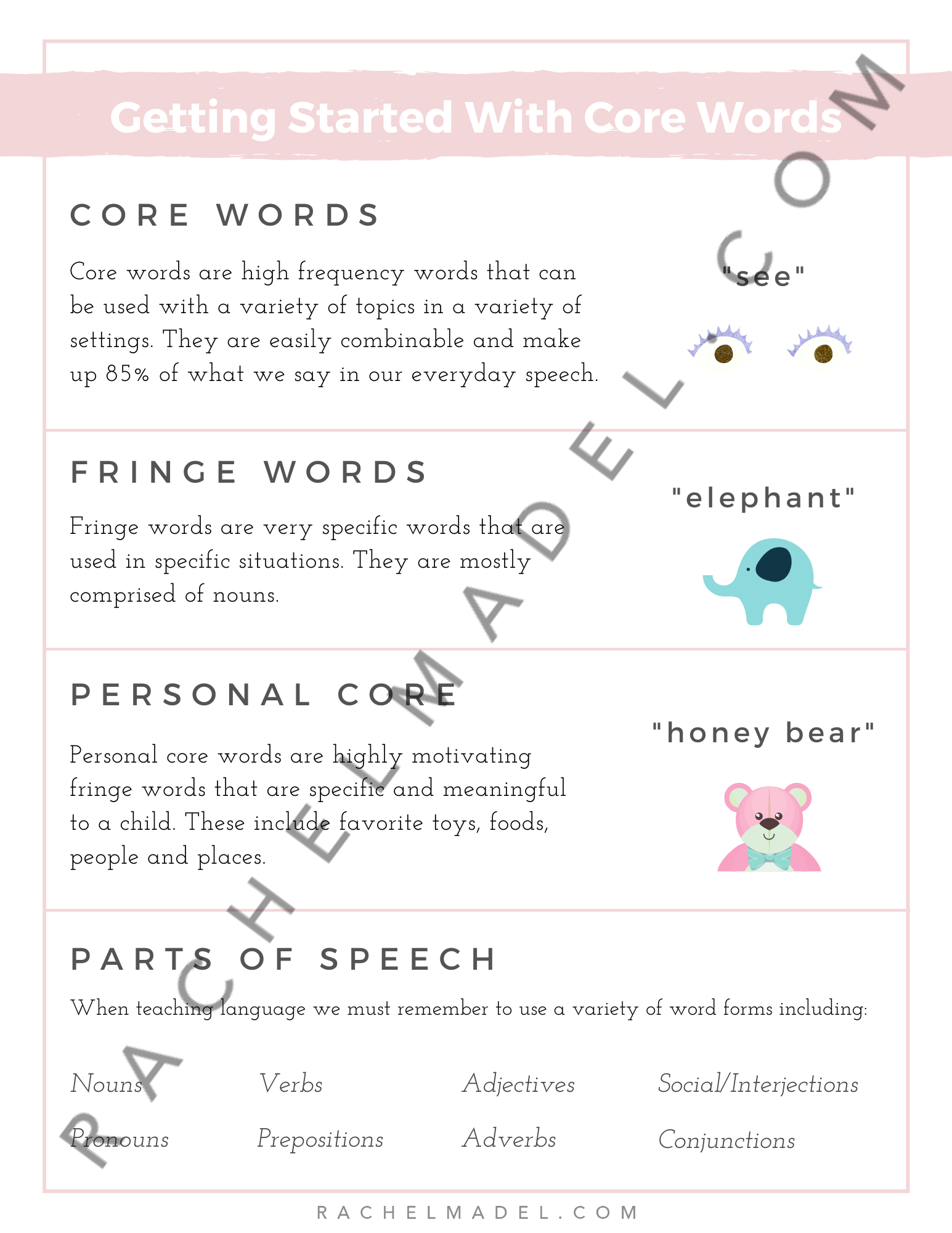Help! My Child is Stuck Only Saying "I want"
Watch the video version of this post here.
One of the most common problems I see in my practice is that kids are stuck using carrier phrases like "I want…" or “I see…” We call these “carrier phrases” because you simply rotate different words into the rote phrase.
EXAMPLE: “I want ball," “I want playground," “I want juice."
Kids pick up these phrases somewhere along their therapy journey; typically from well-intentioned therapists who are trying to get children to start speaking in sentences.
The problem is that kids sometimes get stuck in these carrier phrases and don’t fully comprehend their meaning.
How did we get here?
When kids have limited language skills, we first teach them how to request highly motivating nouns (e.g. “cookie”).
The next step is to expand on those single words and <drumroll please> this is where the carrier phrase is typically introduced.
Educators are interested in expanding beyond single words so they embed learned nouns into chunked phrases, usually starting with “I want." Once a child has sufficiently memorized “I want + noun,” then a variety of other carrier phrases are typically introduced (e.g. “Can I have the…”, “Let me see the…” or “It’s my turn…”).
The end result might be more overall words but the comprehension isn’t always there.
How do you know there are comprehension difficulties?
There are two red flags that can tell you a child isn’t comprehending these chunked phrases.
Using multiple carrier phrases at one time
The first is when a child starts using ALL of their carrier phrases at once. I have a 6-year-old that I work with who loves playing with toy keys. To request the keys he will start by saying “I want keys.” If I pause and don’t give them to him right away then he might say “let’s play keys," followed by “I see keys,” “more keys” and “open the keys”. He rattles off every memorized phrase he knows because he’s not sure what the expectation is.
Overgeneralizing one phrase
The second tell-tale sign of comprehension difficulties is when one phrase is overgeneralized in contexts where it doesn’t make sense. When I first started seeing the 6-year-old with a key obsession, I began by showing him a picture of a child jumping on a trampoline and asked “What’s he doing?” He responded by saying “I want jumping." The next photo: “I want driving car," and the next photo: “I want singing.” He simply memorized to put “I want” in front of everything he said because he was taught early on that he will get what he wants.
Teaching chunked phrases is also problematic because we’re not breaking down these phrases into the most basic components. The phrase “I want” is typically taught together. However, early language learners don’t understand that “I want” is actually two separate words. Babies who are learning language go from single words (e.g. “juice”) to 2-words (e.g. “want juice”). When we skip ahead we don’t allow for valuable teaching moments for children to learn the difference between these individual words.
What’s the solution?
Not sure what core words are? I’ve already covered that in an earlier blog post and one of my videos.
Core words are fantastic because they are the most frequently used words AND they allow children to easily combine words into novel phrases and sentences.
Below I’ve listed 5 of my favorite core word combinations to teach instead of simply having a child say: “I want…”
1.) “See it”
I tend to use this with iPad activities or preferred videos on YouTube. Start watching their favorite video and then PAUSE. Turn the iPad away from them and start modeling the core word “see” or “see it” as an alternative way to request watching the video. The nice thing about the word "see" is that it can also be used for commenting.
2.) “Like it”
Instead of having a child always tell us what they want, it’s powerful for children to tell us what they "like". I love this because commenting is powerful. It’s intrinsically reinforcing because when a child tells us what they like then we typically give it to them more often.
3.) “Me/You”
I like to keep it simple when teaching personal pronouns since they can be so challenging. Instead of “my turn,” it can be effective to practice turn-taking with a simple “me” or “you” to talk about who will take a turn next.
4.) “I do”
Children are often quite adamant about doing things on their own terms, so helping to teach a child say “I do” grants immediate independence. This is more specific than simply saying “I want." I make sure to contrive scenarios with materials and activities that a child is used to doing solo. When I intervene, it’s a perfect opportunity for them to declare their independence.
5.) “No”
Nothing is quite as powerful as allowing a child an opportunity to tell us what they don’t want. “No” can easily be combined with a variety of fringe vocabulary as well as other core words (e.g. “no go," “no more," "no help”). It also can be used to stop an activity that they really don’t like.
Instead of teaching a child a 3-4 word carrier phrase that a child might memorize, start introducing core words to ensure true comprehension. Eventually, we can build vocabulary skills so that a child can spontaneously say “I want ___” but they also will be able to say “you want," “don’t want” and “want more” because they truly understand the meaning behind these words.
If you're interested in core words then be sure to follow me on instagram or facebook because I'm constantly posting photos that can give you lots of ideas on how to incorporate more core words into the mix!
OVER TO YOU
Now---Would love to hear from you. Is your child stuck in the "I want" phrase? Tell me about it in the comments below!



